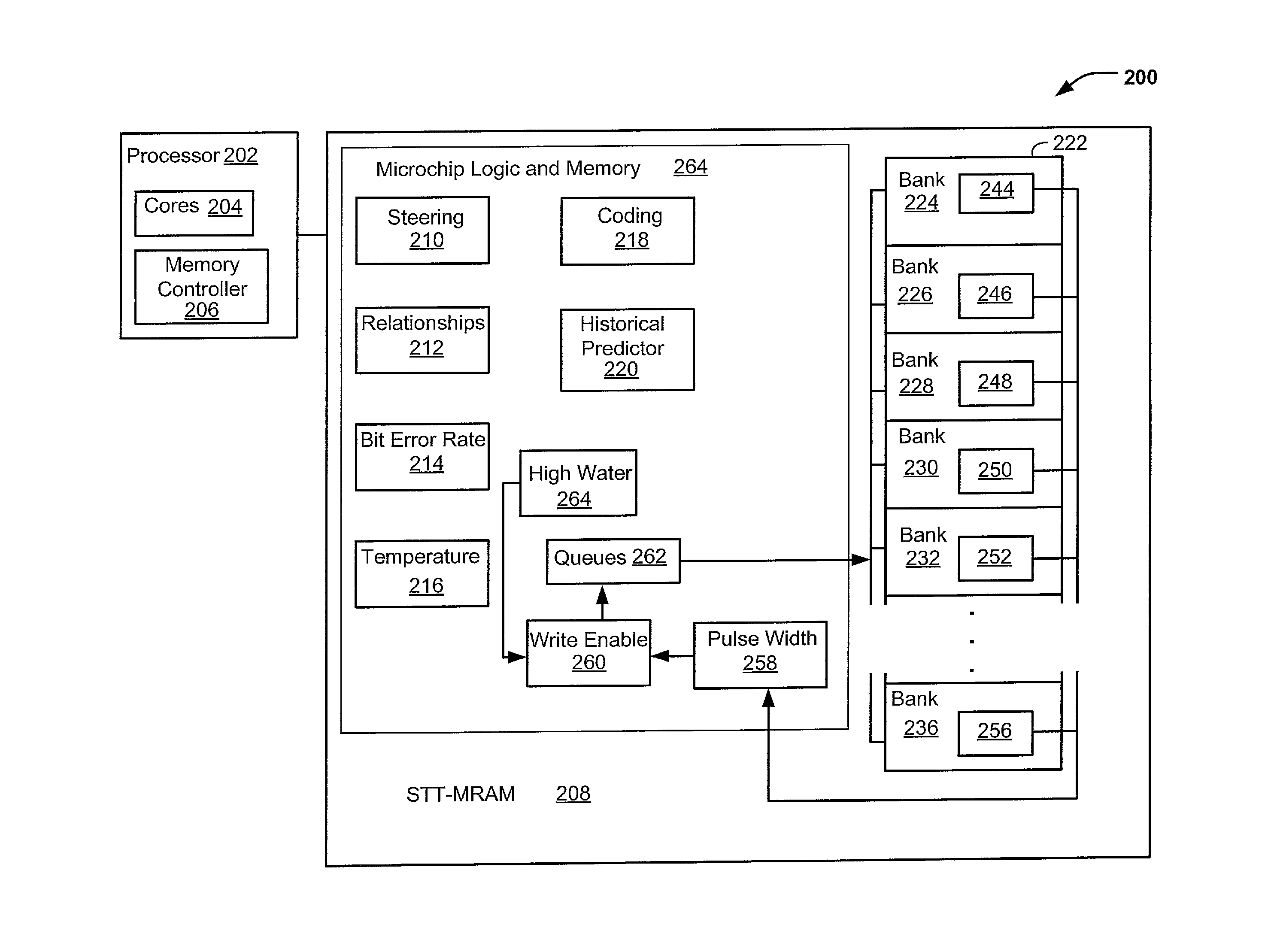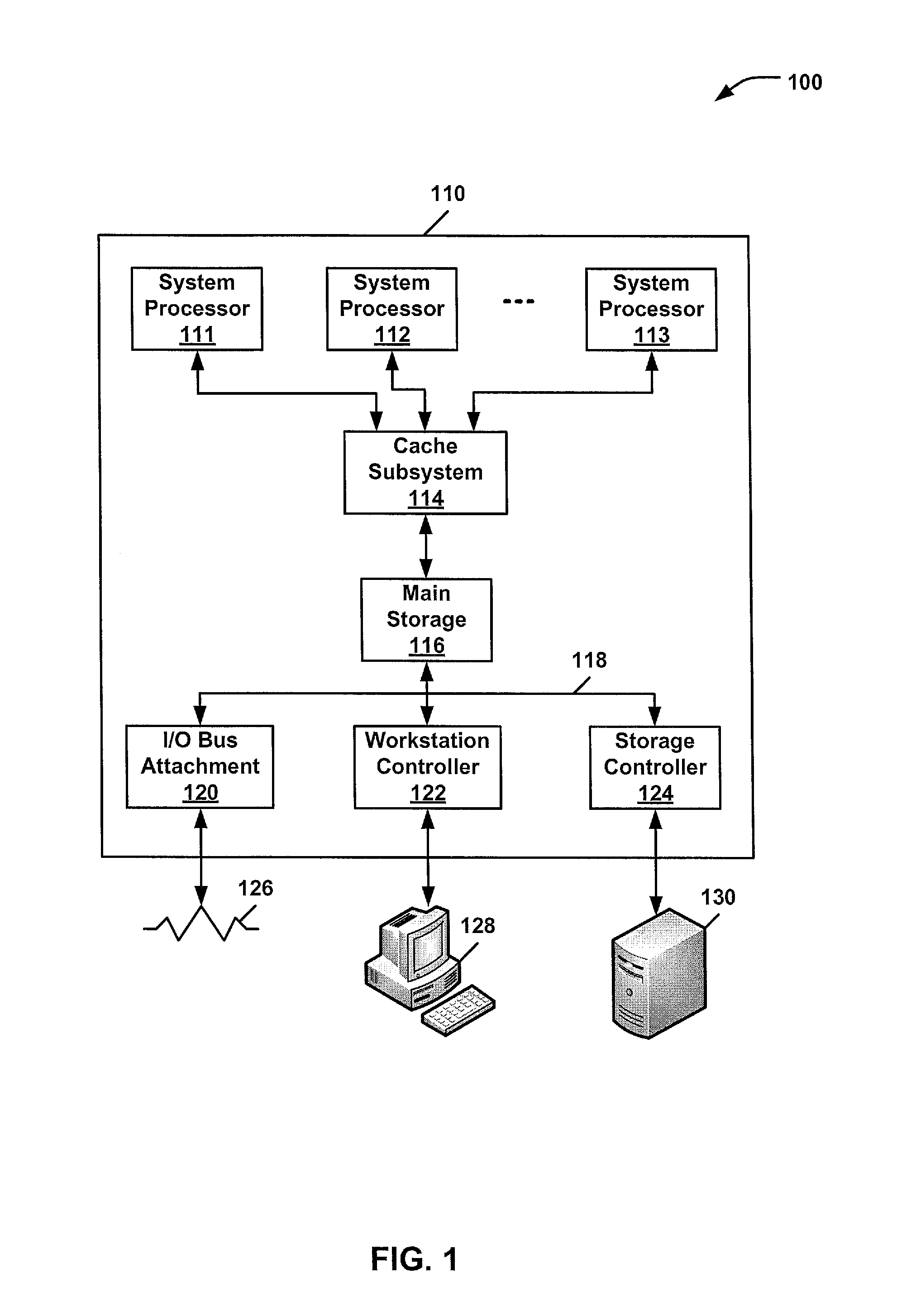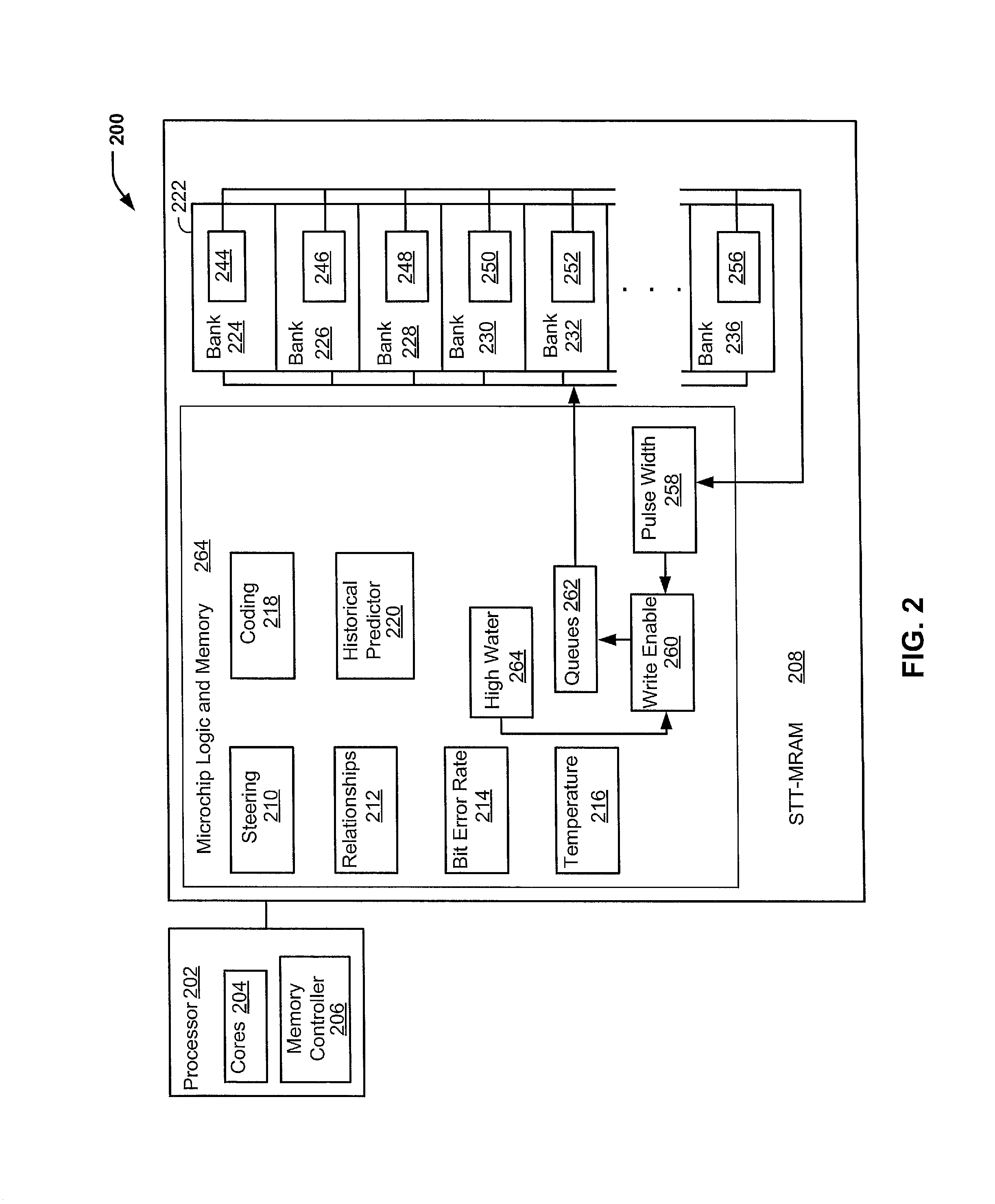Dynamic temperature adjustments in spin transfer torque magnetoresistive random-access memory (stt-mram)
- Summary
- Abstract
- Description
- Claims
- Application Information
AI Technical Summary
Benefits of technology
Problems solved by technology
Method used
Image
Examples
Embodiment Construction
[0016]Programming pulse widths may be continuously adjusted based on sensed temperatures in an STT-MRAM. One or more temperature sensors on the STT-MRAM microchip may be continuously monitored to adjust the programming pulse width. Write latency may be improved by using shorter programming pulse widths in response to higher temperatures. Longer programming pulse widths may be used at lower temperatures according to the adaptive scheme. An embodiment capitalizes on the fact that the write latency required to achieve a targeted level of reliability is inversely related to the operating temperature of the memory data array and associated logic.
[0017]An STT-MRAM microchip with temperature sensors may enable the automatic adjustment of microchip-wide programming pulse width writes. A cache system of the STT-MRAM may cluster write operations to a physical section of the cache. The clustering may increase a probability that shorter writes are performed (e.g., Most Recently Written, Most Fr...
PUM
| Property | Measurement | Unit |
|---|---|---|
| Temperature | aaaaa | aaaaa |
| Width | aaaaa | aaaaa |
| Threshold limit | aaaaa | aaaaa |
Abstract
Description
Claims
Application Information
 Login to View More
Login to View More - R&D
- Intellectual Property
- Life Sciences
- Materials
- Tech Scout
- Unparalleled Data Quality
- Higher Quality Content
- 60% Fewer Hallucinations
Browse by: Latest US Patents, China's latest patents, Technical Efficacy Thesaurus, Application Domain, Technology Topic, Popular Technical Reports.
© 2025 PatSnap. All rights reserved.Legal|Privacy policy|Modern Slavery Act Transparency Statement|Sitemap|About US| Contact US: help@patsnap.com



